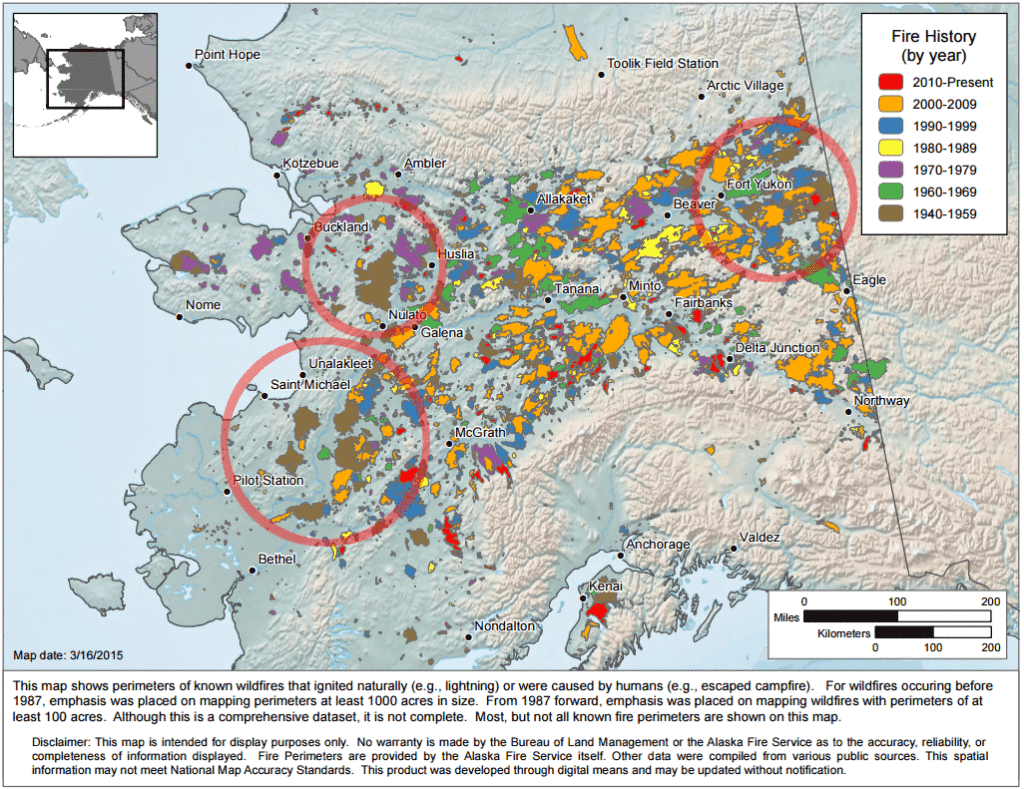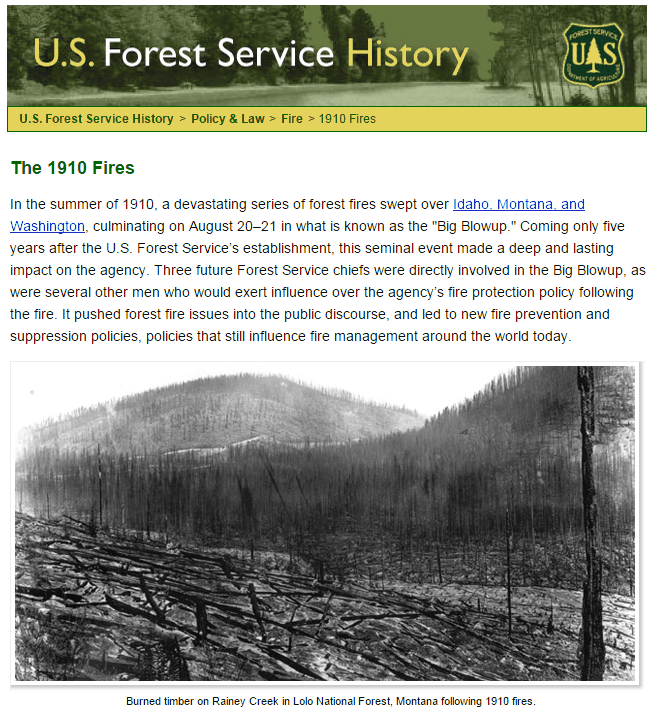Alaska’s fire season is now more than a month longer than it was in 1950. At one point this summer, more than 300 wildfires were burning at once. Southeast of here, in our Pacific Northwest, even the rainforest is on fire…this is a threat to many communities.
Obama Prophesies Climate Nightmare: Famine, Floods, Fire, Fumes and Fighting | MRCTV
Whatever Obama says, the exact opposite is true. According to the BLM, Alaska’s largest forest fires occurred during the 1940’s and 1950’s
Forest fires decreased in Alaska after the end of the Little Ice Age
Despite high variability at interannual to decadal scales, larger trends occur at the centennial scale. A widespread trend found in dendrochronological studies across boreal Canada has been the decrease in fire frequency following the end of the Little Ice Age in the mid 19th century (Brassard and Chen 2006).
https://www.firescience.gov/projects/06-3-1-26/project/06-3-1-26_final_report.pdf
America’s largest fire occurred in the Pacific Northwest 105 years ago, when CO2 was 300 PPM.
Obama is a pathological liar, who is incapable of telling the truth about anything – ever.




Obama is a puppet a Teleprompter reader. Changing him with another puppet from whatever of the two parties won’t make a difference. First kill the beast.
https://youtu.be/2wYsfUMDFM4
Statesters!
Reblogged this on Climatism and commented:
Once again, “science” exposes the blatant lies Obama is willing to deploy in order to push the climate change agenda.
And the mainstream media continues to let him get away with it, every time. Or more likely, they accept that an environmental lie is a justified one.
These are indeed Orwellian times.
Jetstream blocks the flow of water vapor over California.
http://vortex.accuweather.com/adc2004/pub/includes/columns/newsstory/2015/650x366_09031158_hd34.jpg
Grew up in Tucson. Hooray for Monsoon Season! Lots of thunder and lightning. El Nino brings more rain in winter there, too.
President Obama should stop at those roadside plaques where there is an enormous wealth of information posted. I first learned about the great fire of 1910 from this plaque along I-90 near Wallace, Idaho. You can see it on Google Streetview, but you can’t read it. I took pictures of it on a tour of the USA. https://www.google.ca/maps/@47.4623191,-115.7102601,3a,15y,323.9h,88.46t/data=!3m6!1e1!3m4!1sML67R84gJmx0dvNJiEIiYw!2e0!7i13312!8i6656!6m1!1e1?hl=en
Information from the Alaska Public Lands Information Center:
http://alaskacenters.gov/fires-in-alaska-two.cfm
What I found most interesting is:
Fire Facts
In the 1700’s, when Captain Cook entered what is now called Cook Inlet, he found caribou, but no moose in the area we know as the Kenai Peninsula. It is thought that the fires of 1941 burned off the spruce and created the first growth birch, willow, and aspen stands—making the area an ideal habitat for moose.
There is evidence that the entire 25 million acres of the Copper River Basin all burned at some time, long ago.
The 1977 Bear Creek fire, near Farewell, burned 345,000 acres. Grass grew up after the fire, attracting bison herds to the area. Land and game managers are reburning to maintain a habitat for the bison.
In 2013, Alaska had a hot summer; during that year, fires burned 1,319,866 acres. In 2014, Alaska had one of its wettest summers ever; during that year, fires burned 233,529 acres.
According to game biologists, if there were no fires, there wouldn’t be opportunities for birch, willow, and aspen to grow. All three of these species are staples in a typical moose diet. So, in a weird way, if there were no fires, there would be no moose.
In Alaska, lightning starts about 400 fires a year.
———————————————————————————————————————
So if you want more moose habitat you gotta have fires.
Yes, worst fire was in 1910, most intense hurricane in 1935, deadliest tornado in 1925, 2nd deadliest tornado in 1840, third deadliest tornado in 1896, deadliest hurricane in 1900, deadliest flood in 1889, worst heatwave in 1936, worst drought/crop failures during 1934 and 1936, The US was importing grain in 1936. Worst coldwave in 1899, with blizzards and subzero (F) temperatures all the way down to Florida. Do you want any more? Our recent weather/climate has been quite tame by comparison.
A 1000-yr record of forest fire activity from Eclipse Icefield, Yukon, Canada – 2006
Comparison of forest fire signals in the Eclipse ice cores with the record of annual area burned in Alaska and the Yukon demonstrates that 80% of high fire years in Alaska and 79% of high fire years in the Yukon are identifiable as NH4 plus concentration residuals in at least one core from Eclipse Icefield, although any individual core records 36-67% of these events. The Eclipse ice cores record high fire activity in the AD 1760s, 1780s, 1840s, 1860s, 1880s, 1890s, 1920s-1940s and 1980s. Peak fire activity occurred in the 1890s, possibly reflecting anthropogenic ignition sources associated with the large influx of people to the Yukon during the Klondike Gold Rush. Periods of low fire activity are evident during the 1770s, 181Os-1830s, 1850s, 1950s and 1960s. Extending our proxy of fire activity to AD 1000 using annual NH4 plus concentrations from our one core that extends back this far provides evidence of high fire activity from 1240 to 1410 during the waning stages of the ‘Mediaeval Warm Period’.
http://hol.sagepub.com/content/16/2/200.abstract
Don’t see any 2000’s here, but we may also be beyond the waning stages of a warm period.